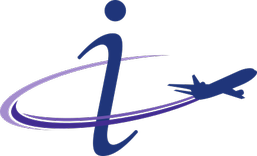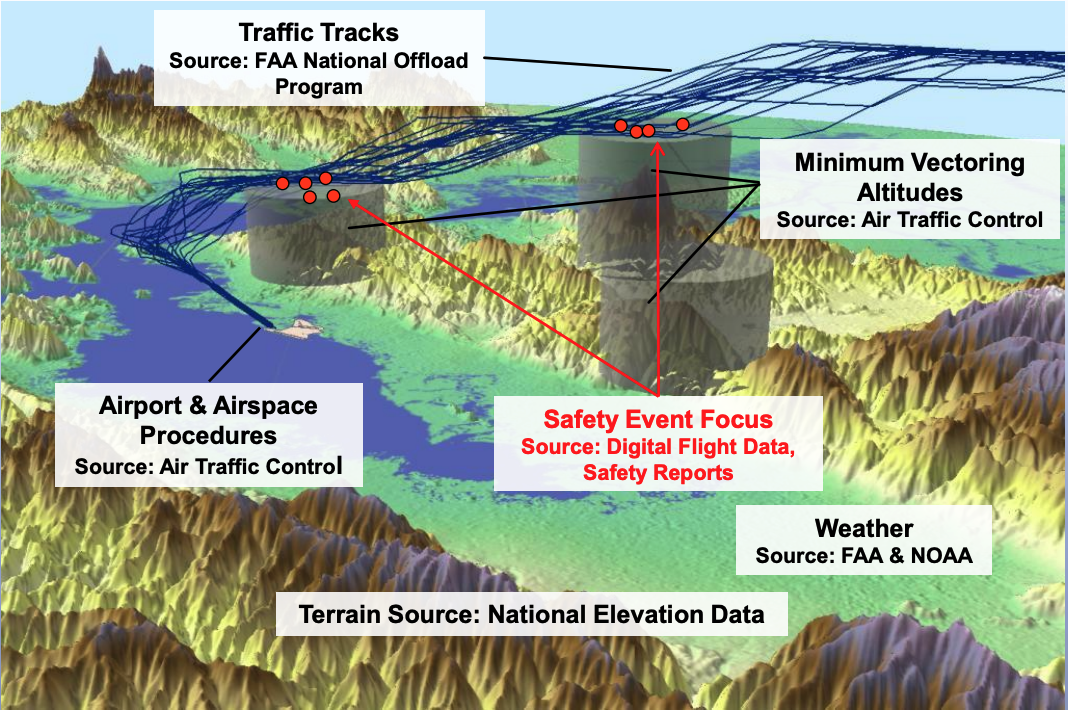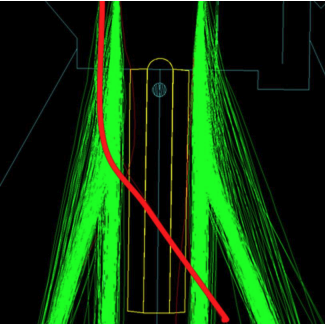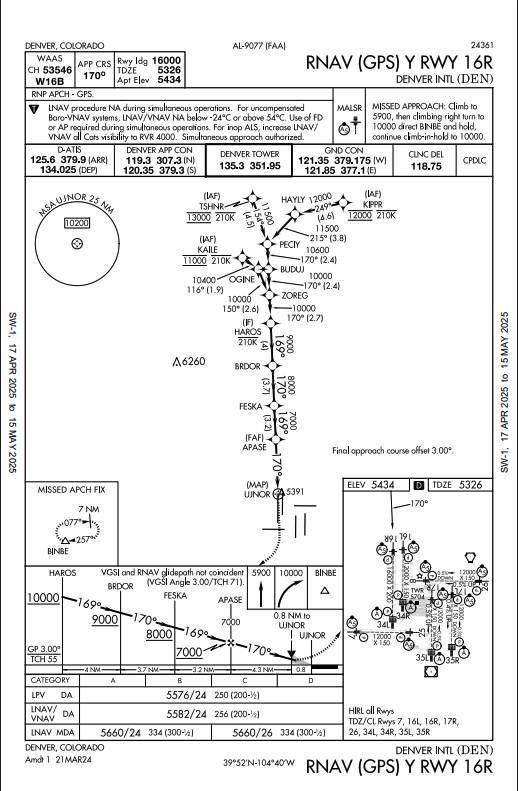
ASIAS’ History
How Did ASIAS Start?
For many years, the aviation industry realized that risk-based assessments must be the foundation of decision-making to advance safety. Further, for data collection programs to be comprehensive and effective, industry recognized that all stakeholders — government, manufacturers, operators, and employee groups — must establish a reporting culture based on trust and focus on proactive mitigation of adverse outcomes.
In October 2007, the FAA and aviation industry launched a collaborative safety analysis and data sharing initiative known as Aviation Safety Information Analysis and Sharing (ASIAS), built on these beliefs.
The dedicated safety professionals who created this initiative established mechanisms and forums for sharing data and technical approaches. Most importantly, they established trust among stakeholders by guaranteeing that sensitive and proprietary information would be used only to advance safety.
Today, ASIAS leverages FAA data, airline proprietary safety data, publicly available data, and other industry data sources to monitor known risks, evaluate the effectiveness of deployed mitigations, and identify emerging hazards. ASIAS stakeholders provide data, help contextualize it during analyses, and collectively draw conclusions and establish best practices.
ASIAS has enabled the aviation community to transition from a forensic approach to managing safety to a more prognostic/diagnostic approach. It is an active, robust example of how years of dedicated collaborative data sharing can have a positive impact in advancing safety.
Today, ASIAS leverages FAA data, airline proprietary safety data, publicly available data, and other industry data sources to monitor known risks, evaluate the effectiveness of deployed mitigations, and identify emerging hazards.
Timeline
- May 11, 1996: ValuJet 592 accident resulting in 110 passenger and crew fatalities.
- July 17, 1996: TWA 800 accident resulting in 230 passenger and crew fatalities.
- February 1997: White House Commission on Aviation Safety and Security directs the FAA to reduce the fatal accident rate by 5x over one decade.
- Fall 1997: CAST is chartered, establishes a goal of 80% reduction in commercial aviation fatal accidents.

- Fall 2007: CAST reports an 83% reduction in the commercial aviation fatal accident rate; ASIAS is chartered; CAST sets a goal to further reduce the commercial aviation fatal accident rate by an additional 50% by 2025; ASIAS begins supporting Aviation Safety InfoShare.


- 2008: ASIAS concludes its first study on Terrain Warnings; ASIAS launches study on risk of midair collision.
- 2009: CAST adopts first SEs to mitigate risk of controlled flight into terrain based on ASIAS information.

ASIAS analysis of Terrain Awareness Warning System alerts leads CAST to develop and implement three Safety Enhancements. - 2010: ASIAS deploys first benchmark metrics, allowing airlines to compare their operational safety performance to an aggregate, de-identified norm.
- 2011: ASIAS collaboration expands to include Metroplex airspace and procedure design teams and international Regional Aviation Safety Groups (RASGs).
- 2012: ASIAS develops metrics to detect precursors to loss of control, focusing on airplane state awareness.
- 2013: ASIAS expands to include General Aviation participation.
- 2014: CAST adopts first SEs based entirely on proactive ASIAS information, i.e., without a prior accident or incident; FAA publishes SAFO 14005, its first SAFO based on ASIAS information, raising awareness of the risk of zero flap takeoffs and flaps moving during the takeoff roll.

ASIAS analysis of Area Navigation (RNAV) Departure deviations leads CAST to develop and implement three Safety Enhancements. - 2015: ASIAS stakeholders agree to flight-level fusion of their data, enabling researchers to obtain a more complete picture of potential safety trends and their causes.
- 2016: ASIAS completes the data fusion operational prototype.
- 2017: FAA publishes SAFO 17001, raising awareness of the risk of Class B airspace excursion events.
- 2018: FAA publishes SAFO 18009, raising awareness of the risk of runway overrun on takeoff from SFO when utilizing performance data for an incorrect runway; CAST/ASIAS receive an Aviation Week Laureate Award in Commercial Aviation.
- 2019: ASIAS completes its first directed study on General Aviation operations, focusing on the risk of midair collision; ASIAS studies B737MAX to identify risk of runaway stabilizer trim events.
- 2020: ASIAS expands to include Rotorcraft participation; ASIAS studies high energy unstable approaches for General Aviation operations, leading to a FAAST safety briefing to remind crews to be mindful of their aircraft’s energy state on approach.
- 2021: ASIAS completes a study on ILS abnormalities that is only possible with fused data; FAA publishes SAFO 21004, raising awareness of the risks of ILS abnormalities.
- 2022: ASIAS provides analytical support to an FAA/industry SRM team assessing risk of midair collision at DEN, directly leading to the adoption of an offset Area Navigation (RNAV) approach procedure for runway 16R at KDEN. This marks the culmination of a decade-long effort to mitigate risk of midair collision for arrival aircraft operating on DEN runways 16L/R.

3° lateral offset approach serving runway 16R at DEN implemented to reduce TCAS RAs with approaches to runway 16L. - 2023: ASIAS conduct analysis of runway incursion events in response to the FAA Administrator’s Safety Call to Action; FAA publishes INFO 23010 to raise awareness of DEN midair collision risk mitigation efforts.
- 2024: ASIAS integrates with United States Aerospace Safety Team (USAST).
- 2025: ASIAS initiates development and deployment of enhanced, modernized ASIAS capabilities.
Growth in Membership and Data
At chartering in 2007, seven airlines signed memoranda of understanding to participate in ASIAS. Today, over 220 operators in commercial aviation, general aviation, and rotorcraft have signed memoranda of understanding, and dozens of additional aviation organizations (e.g., trade associations, employee representative groups, and academia) have committed to abide by the ASIAS core operating principles to participate in ASIAS activities.
ASIAS datasets include (but are not limited to) the following:
- Aviation Safety Action Program (ASAP)
- Flight Operational Quality Assurance (FOQA)
- Air Traffic Safety Action Program (ATSAP)
- Mandatory Occurrence Reporting (MOR)
- Electronic Occurrence Reporting (EOR)
- National Offload Program (NOP)
- Automatic Dependent Surveillance Broadcast (ADS-B)
- Airport Surface Detection Equipment — Model X (ASDE-X)
- System Wide Information Management (SWIM)
- Automated Surface Observation System (ASOS)
- Meteorological Aviation Report (METAR)
- Accident and Incident Data System (AIDS)
- Aviation Safety Reporting System (ASRS)
- Near Midair Collision System (NMAC)
- Service Difficulty Reports (SDR)
- Digital Automatic Terminal Information Service (DATIS)
- Digital Terminal Procedure Publication (DTPP)
- National Flight Data Center (NFDC)
- Airline Service Quality Performance (ASQP)
- National Oceanic and Atmospheric Administration Rapid Refresh (NOAA RAP)
- Notice to Airmen (NOTAM)
- Digital Audio Legal Recorder Remote Audio Access System (DRAAS)
ASIAS’ Impact
ASIAS is considered a world standard for collaborative data sharing and analysis. Applications beyond aviation crediting ASIAS include:
- Healthcare Fraud Prevention Partnership (HFPP)
- Partnership for Analytics Research in Traffic Safety (PARTS)
- Identity Theft Tax Refund Fraud — Information Sharing and Analysis Center (IDTTRF-ISAC)
- Railroad Information Sharing Environment (RISE)
Read more on these topics in Collaborative Government and Industry Initiatives (CAST)’s 2020 report on the history and future of Improving Aviation Safety